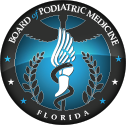Evidence That Pilots Are Increasingly Using Over-the-Counter, Prescription, and Illicit Drugs
The National Transportation Safety Board (NTSB) recently analyzed toxicology tests from 6,677 pilots who died in a total of 6,597 aviation accidents between 1990 and 2012. The results demonstrate a significant increase in the use of a variety of potentially impairing drugs.
The study found significantly increasing trends in pilots’ use of all drugs, potentially impairing drugs (those with a US Food and Drug Administration warning about sedation or behavior changes in routine use), controlled substances, and illicit drugs (those defined as Schedule I by the US Drug Enforcement Administration). The final report, Drug Use Trends in Aviation: Assessing the Risk of Pilot Impairment, is available on the NTSB’s Safety Studies web page under report number SS-14/01.
In this study, the pilot was considered to be positive for a drug if it could be qualitatively or quantitatively identified in blood or tissue; drugs identified only in urine or used as part of resuscitative efforts were excluded.
Overall, 98% of the study pilots were male and 96% were flying privately rather than for commercial purposes. The average age of study pilots increased from 46 to 57 years over the study period.
Over the course of the study, for fatally injured pilots, the following was found:
The proportion of pilots testing positive for at least one drug increased from 10% to 40%.
More than 20% of all pilots from 2008-2012 were positive for a potentially impairing drug, and 6% of all pilots were positive for more than one potentially impairing drug.
Overall, the most common potentially impairing drug pilots had used was diphenhydramine, a sedating antihistamine (the active ingredient in many Benadryl and Unisom products).
During the most recent 5 years studied, 8% of all pilots tested positive for controlled substances; hydrocodone and diazepam each accounted for 20% of the positive findings.
The percentage of pilots testing positive for marijuana use increased to about 3% during the study period, mostly in the last 10 years.
The large increase in the proportion of fatally injured pilots with evidence of potentially impairing drugs suggests an increasing risk of impairment in general aviation. Aviation is the only transportation mode in which a fatally injured operator (pilot) routinely undergoes extensive toxicology testing; no similar testing is routinely performed for fatally injured operators of boats, trains, trucks, or cars. Given the general increase in drug use in the population, it is likely that there has been a similar trend in drug use among operators across all modes of transportation.
These results highlight the importance of routine discussions between health care providers and pharmacists and their patients about the potential risks that drugs and medical conditions can create when patients are operating a vehicle in any mode of transportation.





